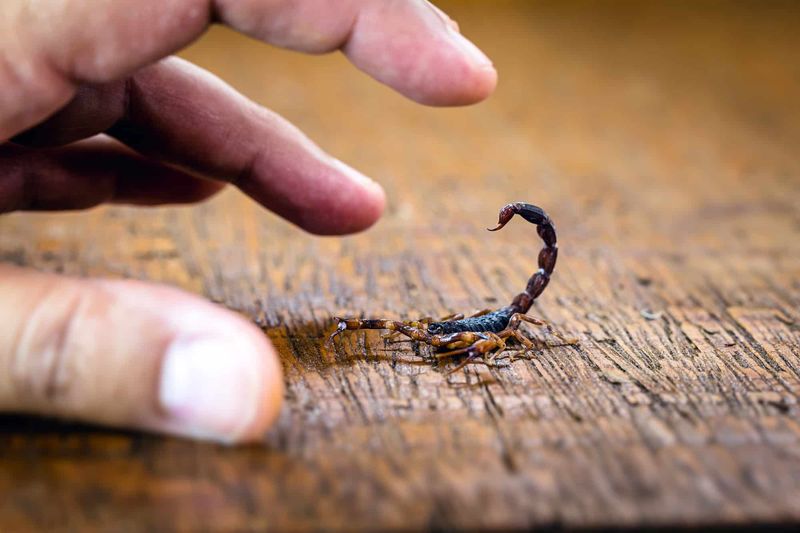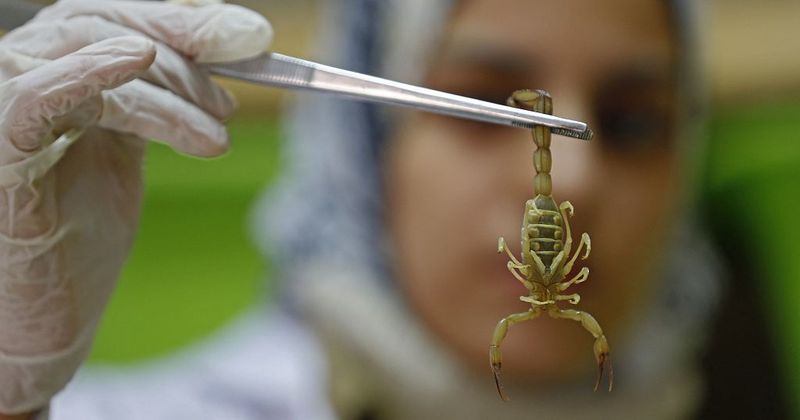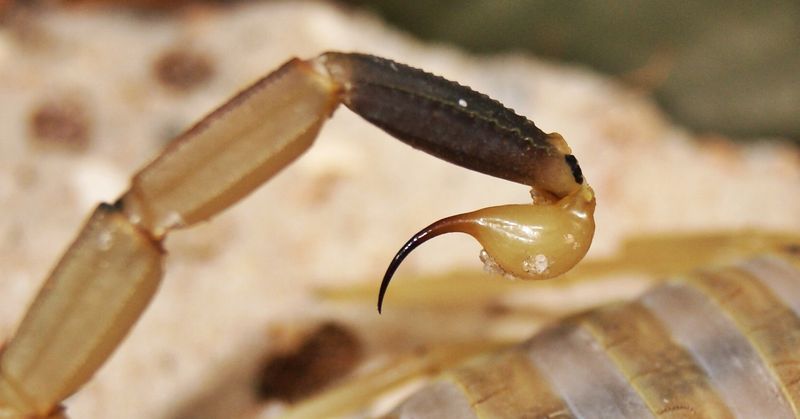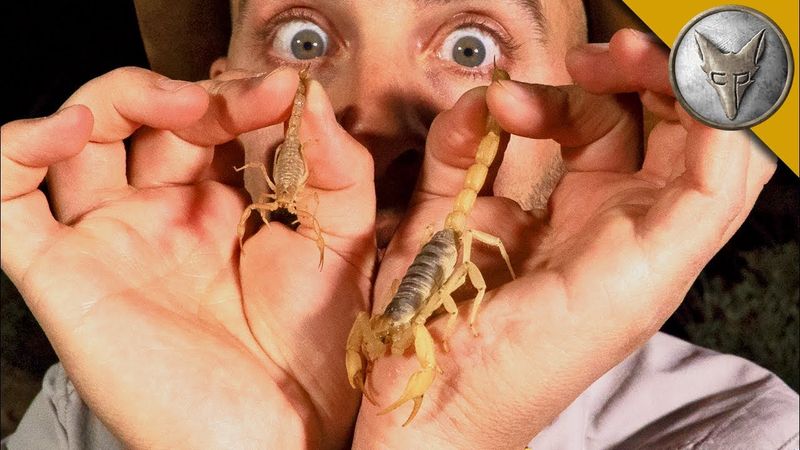The Deathstalker Scorpion, one of the most feared scorpions in the world, often inspires myths and misconceptions about its sting.
Known for its potent venom, this scorpion’s sting is not automatically a death sentence.
Understanding the realities of encountering this creature can help in managing fear and fostering accurate knowledge.
This article explores 13 myths and facts, each shedding light on different aspects of surviving a Deathstalker scorpion sting.
From medical interventions to natural resilience, we debunk myths and highlight truths that could be life-saving.
Read on to discover the intriguing reality of the Deathstalker’s sting.
Myth: All Scorpion Stings are Fatal

Not every encounter with this scorpion ends in tragedy. Although the Deathstalker’s venom is potent, fatalities are rare with prompt medical treatment.
Most healthy adults can survive the sting with appropriate care, which often involves antivenom and pain management. Children and the elderly are at higher risk, but even they can survive with timely intervention.
It’s crucial to remain calm and seek medical help immediately. Despite popular belief, a sting does not guarantee death. In fact, understanding the real risks can help mitigate unnecessary fear and panic, emphasizing the importance of quick response.
Fact: Antivenom is Crucial

Antivenom is the cornerstone of treatment for a Deathstalker sting. This specialized serum neutralizes the venom, reducing its toxic effects. Most health clinics in regions where these scorpions are common stock antivenom, ensuring rapid response to stings.
The effectiveness of antivenom depends on how quickly it’s administered. Delays can lead to increased complications, emphasizing the need for immediate medical attention.
The availability of antivenom, coupled with supportive care, significantly increases survival rates, turning a potentially fatal encounter into a manageable medical issue. Knowing where to access antivenom can be a lifesaver in affected areas.
Myth: No Pain, No Danger

The absence of pain does not equate to safety after a sting. Some individuals experience minimal pain yet face severe systemic reactions. Symptoms can include nausea, sweating, and difficulty breathing.
Ignoring these signs due to lack of pain can be dangerous. It’s essential to monitor for any unusual symptoms following a scorpion sting, regardless of pain level. Quick medical assessment can prevent complications.
This myth downplays the seriousness of a sting and may contribute to delayed treatment, increasing risk. Even a seemingly mild reaction should prompt a visit to a healthcare provider to rule out serious effects.
Fact: Children are More Vulnerable

Children face a higher risk of severe reactions to scorpion stings. Their smaller body size means venom spreads more rapidly, potentially leading to life-threatening symptoms.
A child’s immune system may not respond as effectively, making them more susceptible to severe outcomes. Parents should educate children about avoiding scorpions and seek immediate care if stung. Regions with high scorpion populations often have targeted educational programs to raise awareness.
Understanding this vulnerability is critical in preventing avoidable tragedies. Vigilance and prompt medical attention can turn a potentially dangerous situation into a learning experience, highlighting the need for awareness.
Myth: Old Remedies Are Best

Old wives’ tales often surface as solutions to scorpion stings. Remedies like applying herbs or cutting the wound are not only ineffective but potentially harmful. Modern medicine provides more reliable treatments.
Antivenom and professional medical care offer the best outcomes. Relying on outdated practices can waste valuable time and worsen the situation. Understanding that traditional remedies are not a substitute for medical intervention is crucial.
Embracing modern healthcare methods ensures better results. Myths about ancient cures may be comforting but are often misguided. Trusting in proven medical practices is essential for a swift and safe recovery.
Fact: Quick Action Saves Lives

The urgency of response can’t be overstated when it comes to scorpion stings. Quick action is vital, beginning with calling emergency services or heading to a medical facility. The speed at which medical help is sought can drastically alter the outcome.
Every minute counts, and hesitation can lead to complications. It’s crucial to alert professionals who can administer antivenom and monitor the victim. This proactive approach maximizes the chances of a full recovery.
Delays, on the other hand, can lead to unnecessary suffering and increased risk. Promptness is a key factor in surviving a Deathstalker scorpion sting.
Myth: All Scorpions are Deadly

Not all scorpions carry the same level of threat. Among the 1,500 known species, only a fraction pose serious danger to humans. The Deathstalker is infamous for its potent venom, but most scorpions are harmless.
Understanding the diversity among scorpions can alleviate misplaced fears. Many species play crucial roles in their ecosystems as pest controllers. Misconceiving all scorpions as deadly can lead to unnecessary eradication efforts, impacting the ecological balance.
Education about scorpion diversity can foster coexistence and appreciation. Recognizing the specific threats posed by certain species is essential for informed responses to stings.
Fact: Climate Affects Behavior

Climate plays a significant role in scorpion activity. Warmer temperatures tend to increase their activity, leading to more human encounters. Understanding this pattern helps in anticipating scorpion behavior and taking preventive measures.
During cooler months, scorpions are less active, reducing sting incidents. Knowledge of these behavioral changes can guide safety practices in scorpion-prone areas. Awareness campaigns often align with peak activity seasons to maximize impact.
Recognizing how climate influences scorpion behavior aids in preparedness. This insight is valuable for residents and visitors in affected regions, promoting cautious interaction with the environment and reducing the risk of stings.
Myth: Immediate Amputation Helps

Amputation is an extreme and unnecessary response to a scorpion sting. This myth likely stems from fear and misunderstanding. Modern medical treatments, such as antivenom and supportive care, are effective without resorting to drastic measures.
Cutting off the affected area can cause more harm than good and does not prevent venom spread. Education on proper first aid and medical intervention is crucial. Dispelling such harmful myths is part of improving public health responses.
Emphasizing calm and informed reactions supports recovery and reduces panic. Trust in medical science over outdated, drastic measures is key.
Fact: Some People Show Resistance

A surprising fact is that some individuals exhibit natural resistance to scorpion venom. Genetic factors may play a role in this phenomenon, although it remains rare. Resistant individuals experience milder symptoms and recover quickly.
Research into this genetic variance continues, offering insights into potential medical advancements. While fascinating, resistance is not a guarantee of safety. All stings should be treated seriously, with medical guidance sought promptly.
This fact highlights the complexity of human responses to venom and encourages ongoing scientific exploration. Understanding resistance can pave the way for improved treatments and preventative strategies in the future.
Myth: Venom Has No Medical Use

Contrary to popular belief, scorpion venom has potential medicinal applications. Researchers explore its properties for developing painkillers and cancer treatments. The complex compounds found in venom offer promising benefits in medical research.
This myth undermines the scientific potential of scorpion venom, often dismissing it as purely harmful. Acknowledging its potential encourages support for ongoing studies. Discoveries from scorpion venom research can revolutionize medicine, offering new solutions for various ailments.
Public perception plays a role in funding and support for this research. Recognizing the dual nature of venom as both a threat and a resource is crucial for scientific progress.
Fact: Not Every Region is Affected

Deathstalker scorpions are not ubiquitous. Their presence is limited to specific regions, primarily in parts of North Africa and the Middle East. This geographical restriction means many people will never encounter one.
Knowing where these scorpions are prevalent helps in planning travel and implementing safety measures. Residents in affected areas often receive education on prevention and response. Awareness of the limited distribution can alleviate unnecessary fear in regions where scorpions are absent.
Geographical understanding aids in focusing resources and education where they are most needed, enhancing safety and preparedness for those in high-risk areas.
Myth: Pets Can Save You

Relying on pets to alert or protect against scorpions is not advisable. While some animals may react to scorpions, their actions are unpredictable. Pets can be stung, leading to serious health issues.
It’s a myth that pets serve as reliable detectors or deterrents for scorpions. Instead, focus on preventive measures like sealing entry points and reducing outdoor clutter. Protecting pets from encounters is equally important as safeguarding humans.
Understanding the limitations of pets in scorpion-prone areas encourages responsible pet ownership. Educating pet owners about risks and preventive strategies ensures safety for both pets and their families.

